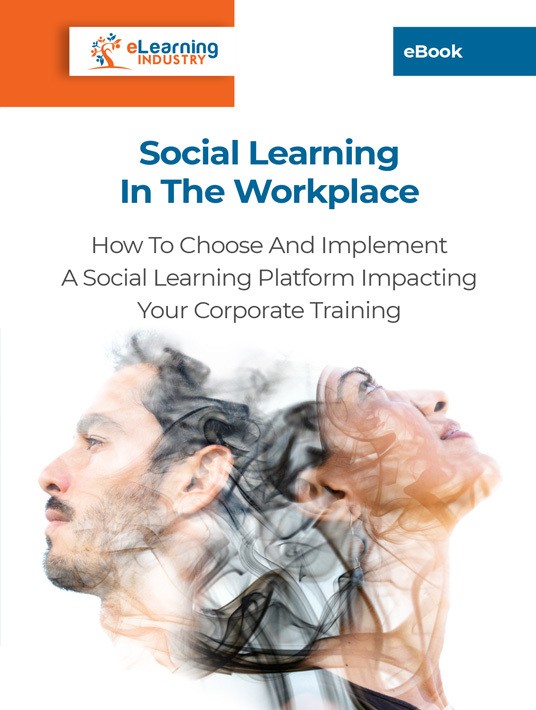Enable Team Collaboration With Social Learning
The world is becoming increasingly capitalist. Even technically communist nations are taking a leaf from the currency-centered countries—at least in terms of business practice. And while successful marketing is individualistic by nature, it can certainly benefit from collaboration. This is especially true in the workplace. Instead of politics and cut-throat competition, teamwork should be fostered. Back-stabbing may get you a promotion, but cooperation improves profits for everyone. So how can you achieve this using social learning tools?

1. Honor The Individual While Valuing The Community
There are lots of military analogies about leading from the front or back. And some are misapplied to the corporate space. In reality, we all know we can’t survive the rat race alone. And everyone plays a crucial role, from the person that restocks the coffee canister to your resident IT. In your online training programs, emphasize this concept. Everyone should know what specific tasks their colleagues’ job involves.
And everyone should have a chance to be awarded and shine. Describe real-world, cause-and-effect chains to show what goes wrong when any cog is missing. These can be presented as organizational charts or even witty comics. For example, the CEO finds the coffee can empty. They doze off in the cab, miss the flight, and a billion-dollar deal gets compromised. Share this video in the office social media group to spark discussion. It’ll get everyone giggling and make them appreciate their peers a bit more. Then, they won’t think twice about giving someone guidance when they’re in need.
2. Encourage Peer-Based Support
There are lots of parenting styles, but the most discernible ones are fear-based and reason-based. The former parent terrifies their child into submission and success. The latter gives their kids logical motivation and teaches them to think things through. This type of child can recognize when it makes sense to seek assistance, and they won’t be afraid to do so. This is the spirit you want to foster at work.
Many office spaces are so toxic that you’d literally rather die than show weakness. You’re worried your exposed flank will be pierced. Or that your momentary ignorance will be used against you in an appraisal. It might not get you fired, but you’re legitimately concerned it could cost you a promotion. By fostering a collaborative corporate community, your staff realizes the success of one is the success of all. Invite staff to ask colleagues for help. This works as a retention tool because they feel supported, and their "helper" feels important and valued. Encourage your team to use the online course discussion and an LMS with live chat to offer ongoing support.
3. Create Communication Guidelines
A lot of social learning takes place on the internet. We scroll through our timelines and newsfeeds, watching clips, playing GIFs, or reading articles. After a week of this, someone mentions something in a conversation, and you chime in with informed statistics. You’re not even sure how you know these things, but a quick Google search proves you right. Unfortunately, trolls don’t Google, and that can ruin your entire web experience. Even within workplace social media groups, someone’s inner troll might come out. We can’t hide behind anonymous usernames at work, but something about digital keyboards brings out the nasty side. So as the moderator of the office group, set clear guidelines. It keeps everything civil and relevant, ensuring team members actually do absorb the information. These LMS communication guidelines can stretch to email and memos. They should include recommended response times for efficiency.
4. Empower Employees Without Overburdening Them
Social learning tools can foster meaningful change in your organization by allowing employees to give each other support and eLearning feedback. However, it shouldn’t be at the price of their own growth or prevent them from completing their tasks. For example, they’re so busy live chatting with someone who needs their help that they miss a deadline. The key is to strike a balance. Encourage them to engage with peers and offer guidance but within limits. You can achieve this by launching a one-on-one peer mentoring program with some ground rules. For instance, they can meet up once a week to discuss their progress and chat about areas of concern.
5. Enable Real-Time eLearning Feedback
Social media groups aren’t the only form of instant communication. Allow employee training participants to access other forms of eLearning feedback, like chatbots and forums. These are great for group tasks, and because they happen in real time, they can be effective. Corporate chat rooms should have someone "on call" at all times, and the role can be rotational.
This person receives an alert whenever someone posts important questions on the forum. This prompts a quick reply. Of course, if the board pings every three minutes, the person on duty will never get any work done. So, for the hour(s) they’re in the hot seat, they should have other office tasks reassigned. They’re also able to curate notifications to pick relevant keywords. These can be search terms within their area of expertise. This way, a chauffeur won’t be pinged on a question about janitorial must-haves. Not unless you want to send the said driver on an urgent supply run.
Collaboration begins in the mind and it’s empowered by attitude. This, in turn, is determined by office culture. Maybe you’re a maverick organization that teaches people to swim by putting them in shark cages. In this case, all your group-work social learning tools are pointless. So how do you foster this community consciousness in your corporation? Award individual excellence but couch it around team support. Make it okay to ask colleagues for help. Set clear communication rules that evoke efficiency and clarity. Finally, ensure everyone can question and answer in real time.
Interested in finding out more about implementing a sound social learning strategy in your organization? Download the eBook Social Learning In The Workplace and discover how to improve workplace performance with an LMS for social learning. Encourage peer-based support and create a workplace environment of trust and mentorship by choosing the right social learning software.









